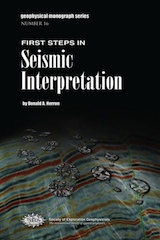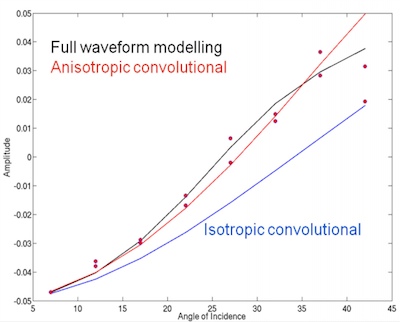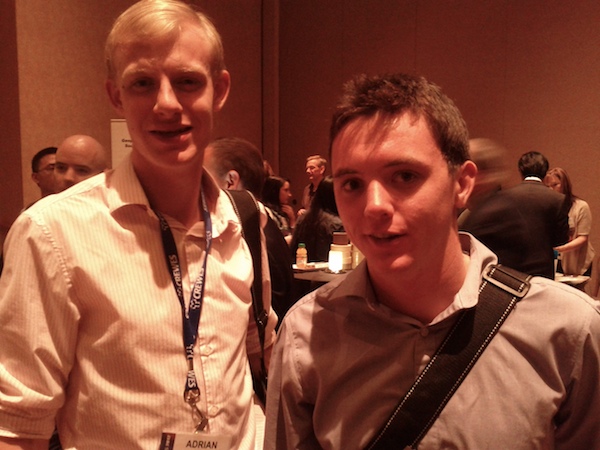Resolution, anisotropy, and brains
/ Day 1 of the SEG Annual Meeting continued with the start of the regular program — 96 talks and 71 posters, not to mention the 323 booths on the exhibition floor. Instead of deciding where to start, I wandered around the bookstore and bought Don Herron's nice-looking new book, First Steps in Seismic Interpretation, which we will review some time soon.
Day 1 of the SEG Annual Meeting continued with the start of the regular program — 96 talks and 71 posters, not to mention the 323 booths on the exhibition floor. Instead of deciding where to start, I wandered around the bookstore and bought Don Herron's nice-looking new book, First Steps in Seismic Interpretation, which we will review some time soon.
Here are my highlights from the rest of the day.
Chuck Ursenbach, Arcis
Calgary is the home of seismic geophysics. There's a deep tradition of signal processing, and getting the basics right. Sometimes there's snake oil too, but mostly it's good, honest science. And mathematics. So when Jim Gaiser suggested last year at SEG that PS data might offer as good resolution as SS or PP — as good, and possibly better — you know someone in Calgary will jump on it with MATLAB. Ursenbach, Cary, and Perz [PDF] did some jumping, and conclude: PP-to-PS mapping can indeed increase bandwidth, but the resolution is unchanged, because the wavelength is unchanged — 'conservation of resolution', as Ursenbach put it. Resolution isn't everything.
Gabriel Chao, Total E&P
 Chao showed a real-world case study starting with a PreSTM gather with a decent Class 2p AVO anomaly at the top of the reservoir interval (TTI Kirchhoff with 450–4350 m offset). There was residual NMO in the gather, as Leon Thomsen himself later forced Chao to admit, but there did seem to be a phase reversal at about 25°. The authors compared the gather with three synthetics: isotropic convolutional, anisotropic convolutional, and full waveform. The isotropic model was fair, but the phase reversal was out at 33°. The anisotropic convolutional model matched well right up to about 42°, beyond which only the full waveform model was close (right). Anisotropy made a similar difference to wavelet extraction, especially beyond about 25°.
Chao showed a real-world case study starting with a PreSTM gather with a decent Class 2p AVO anomaly at the top of the reservoir interval (TTI Kirchhoff with 450–4350 m offset). There was residual NMO in the gather, as Leon Thomsen himself later forced Chao to admit, but there did seem to be a phase reversal at about 25°. The authors compared the gather with three synthetics: isotropic convolutional, anisotropic convolutional, and full waveform. The isotropic model was fair, but the phase reversal was out at 33°. The anisotropic convolutional model matched well right up to about 42°, beyond which only the full waveform model was close (right). Anisotropy made a similar difference to wavelet extraction, especially beyond about 25°.
 Canada prevails
Canada prevails
With no hockey to divert them, Canadians are focusing on geophysical contests this year. With the Canadian champions Keneth Silva and Abdolnaser Yousetz Zadeh denied the chance to go for the world title by circumstances beyond their control, Canada fielded a scratch team of Adrian Smith (U of C) and Darragh O'Connor (Dalhousie). So much depth is there in the boreal Americas that the pair stormed home with the trophy, the cash, and the glory.
The Challenge Bowl event was a delight — live music, semi-raucous cheering, and who can resist MC Peter Duncan's cheesy jests? If you weren't there, promise yourself you'll go next year.
The image from Chao is copyright of SEG, from the 2012 Annual Meeting proceedings, and used here in accordance with their permissions guidelines. The image of Herron's book is also copyright of SEG; its use here is proposed to be fair use.








 Except where noted, this content is licensed
Except where noted, this content is licensed